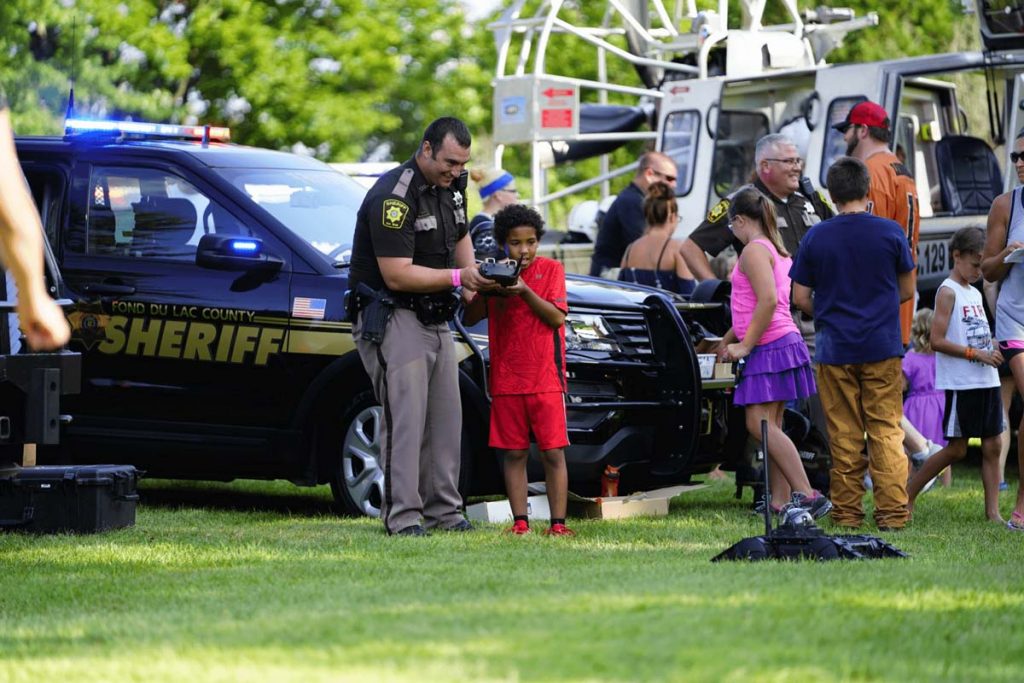In the words of the timeless G.I. Joe, “Knowing is half the battle”. One group of people who would seem to agree with this are the police in Racine, Wisconsin, who have made knowing what’s going on in their community top priority. The logic behind this step is that the police can’t stop or punish crimes they don’t know about, and that improving communication will help them do their jobs more effectively. While they aren’t the only department in the country taking this stance, Racine’s police force has approached the issue in a particularly interesting way.
Being a part of the community

The Racine Police Department has been renting out six properties in the area for a three-year period. Over this time, each house will be manned by a single police officer, whose job it is to act as the department’s main intelligence source for crimes in that community. The houses, known as COP (Community-Oriented Policing) Houses, are also tasked with engaging with the community and helping those in need. The homes can serve as community gathering areas where children can play, or where charities like the Salvation Army can go to feed the neighborhood.
Police Chief Maurice Robinson said it’s changed the community’s approach to policing because “they know that we’re accessible. We’re not an occupying army. We’re here to help.”
And the approach seems to be working. Although the program was put under some stress when a COP House was set on fire during the protests in 2020, the local residents stepped up to defend a COP House officer when someone threw an object at him. And the stats don’t lie: crime has fallen in one neighborhood by 70% since police moved in, according to the Racine department.
The evolution of Community Policing
While Racine’s COP Houses are relatively new, they’re built on very well-established principles of community policing. In fact, some academics trace the concept of community policing back to London in 1829, when Sir John Peele published his Peelian principles. Here in the US, though, we don’t have to go quite so far back in time. In the 1960’s, President Lyndon Johnson was looking for ways to bring police and communities closer together in the wake of the Civil Rights protests. A commissioned report from a Blue Ribbon committee suggested that there was a great distance between communities of the time and their police, and suggested developing a new type of police officer who would act as a community liaison and work to build bridges between law enforcement and minority populations.
In the 1980s a report from the National Police Foundation also showed that police had become very responsive, as opposed to proactive, in preventing crime. The answer, they argued, was to have officers spend less time in cars moving from incident to incident, and more time on foot and within the community. Since then, many places have embraced the community policing approach, with cities such as Flint, Kansas City, Dallas and Cincinnati leading the charge.
The concept

Many community-oriented police structures focus on assigning officers to a specific area, or ‘beat’. In the case of Racine, the officers’ beat is wherever the COP House they live in is located. Officers become familiar with their area through a process of ‘beat profiling’.The officers are then taught how to design specific patrol strategies to deal with the types of crime that are experienced in that beat.
As COP House Officer Tim Cisler said, “So anything that occurs in that neighborhood, they should know about it. Trends in crime, if there’s a spike in that from vehicles or if there’s a spike in shootings, you should just keep a finger on the pulse.”
Beyond information gathering, the local officer also puts a human face on the local department. This helps to reduce ‘community alienation’ and increases support for all police in the area, not just the local COP resident officer.
Part of a broad shift
We’re seeing more and more community policing policies coming into effect across the country. Perhaps this is no surprise, as the conditions are not unlike those in the 1960s that lead to the first real examination of the approach. With police departments around the country looking to improve community relations, we’re likely to see more and more of these initiatives coming into effect.
This article was provided by Kustom Signals, Inc., a global provider of police video and speed enforcement products.

